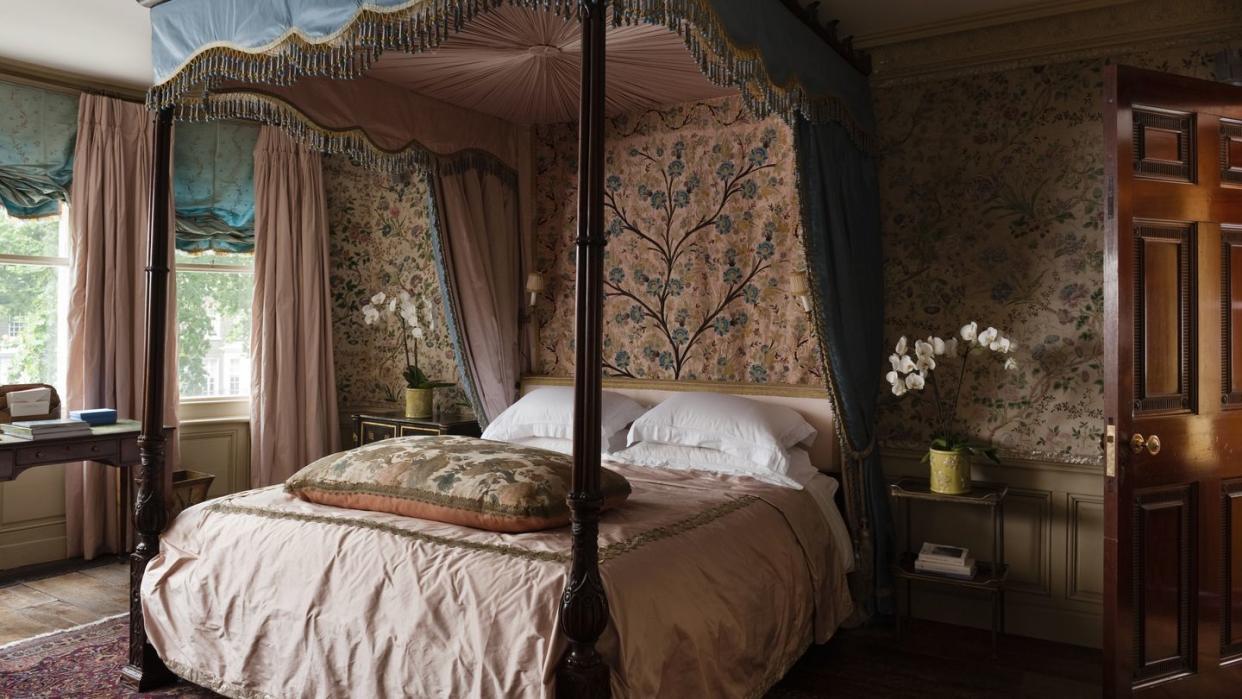These Types of Furniture Don't Exist Anymore—But They Should

"Hearst Magazines and Yahoo may earn commission or revenue on some items through these links."
In 1923, the height of the Art Deco era, Robert Frost wrote Nothing Gold Can Stay, which essentially implies that all extraordinary things will come to an end. Though it may seem like a pessimistic take on beauty, the American poet had a point. With each passing decade, we’ve seen some of our favorite pieces of furniture—fainting couches, marble bathtubs, and telephone chairs, to name a few—disappear in favor of more convenient replacements that have adapted to a more modern world.
Consider this our plea to bring such nostalgic pieces back. They may not serve our contemporary way of life as well as their newer counterparts, but they certainly are beautiful. Plus, they recall a simpler time, and what’s better than that.
Ahead, we’ve rounded up our favorite furniture pieces of the past to indulge in what philosophers have dubbed “Golden Age syndrome.” As its name implies, Golden Age syndrome is a notion that a different moment in time—typically earlier—is better than the present. The moniker carries a negative connotation as far as wholesale longing for ages past, but we think a little yearning for certain relics is healthy. From ornate 18th-century secretary desks to Murano glass ashtrays, there's plenty of near-extinct furniture and decor that we'd love to see make a return. If you, too, have a thing for technically useless furniture that’s pretty to look at, you may want to consider snagging some of our favorite finds. A word of warning: Because many of these prized antiques are no longer in production, they don’t come cheap.
The Secretary Desk
Plenty of people skip going into the office to work from a beautiful home offices, but their setup doesn't typically involve an authentic secretary desk because, aside from the fact that they aren't very practical for anyone with a monitor, they aren't really made anymore. These desks were most popular throughout the mid-18th and 19th centuries. Unlike more contemporary desks, secretaries boast compartments and drawers, and, most prominently, a hinged door that unfolds to provide a small work space.
The Secretary Desk
1stdibs.com
£34817.60
1stDibsThe Formal Ashtray
Ashtrays certainly still exist, but people don't use them as much as they did in the early 1960s, when this Flavio Poli-designed one was made. It wasn't until the middle of the decade when scientists discovered how detrimental cigarettes were to our health. Before that realization, though, nearly 70% of adult men in the U.S. smoked cigarettes, so you can bet that there were more than a few ashtrays in people's homes.
The Formal Ashtray
chairish.com
$159.00
ChairishThe Traditional Armoire
Like ashtrays, more than a few people still have wardrobes to house a few pieces of clothing, but back in the nineteenth century, an armoire was pretty much the entire closet, not just extra storage. Armoires had a section for hanging pieces, drawers for undergarments, and cubbies for shoes. In the days before clothing stores with universal sizing, people's wardrobes were custom made, so they often didn't have clothing collections as big as ours in the twenty-first century. With that in mind, it's easy to believe that an entire wardrobe would fit in one or two of these ornate armoires.
The Traditional Armoire
1stdibs.com
$7616.35
1stDibsThe Telephone Chair
Telephone chairs are charming pieces of furniture that have no use in today's world—unless you get creative! Though they were designed in myriad styles, every telephone chair featured the same shape: a chair attached to a small table, where the telephone would live. Even with long wires, people weren't able to take the receiver into another room, so they were often confined to a small area. Telephone chairs found themselves in many American homes between the 1930s and 1950s. People would take a seat on the chair and stay there for the duration of the call.
The Telephone Chair
chairish.com
$700.00
ChairishThe Rotary Telephone
We couldn't include a telephone chair and leave out the telephone itself. Enter this punchy turquoise rotary dial phone from the 1950s. These kinds of devices were popular until cellphones unofficially took over in the 2010s. In 2022, few people still have and use a landline.
The Rotary Telephone
chairish.com
$275.00
ChairishThe Fainting Couch
Fainting couches are much like daybeds and chaise longues with one key difference: the purpose. Fainting couches are low-profile beds with a curved wooden frame that is raised on one end. They were popular during the Victorian era when women would often pass out from painfully tight corsets. They would either collapse or feel as if they're about to collapse and make their way to the fainting couch to recover. Luckily, women's beauty standards have drifted in such a way that eliminated the need for a fainting couch.
The Fainting Couch
1stdibs.com
$9000.00
1stDibsThe Vanity
Vanities still exist, but they're not nearly as popular now as they were during the early twentieth century. These days, women tend to get ready for the day or a night out in their bathrooms or dressing rooms. This Louis XVI-style vanity and matching chair were made between 1900 and 1920, and bear the original soft gray paint.
The Vanity
1stdibs.com
$2800.00
1stDibsThe Stone Bathtub
A marble bathtub may seem like an extravagance today, but before heated water was so easily accessible, such a basin was necessary. Marble, more so than any other natural stone, retains heat, making it ideal for baths. Even then, they were luxuries that only the rich enjoyed. One of the most famous marble bathtubs in the U.S. is on the upper level of the Vanderbilt's Newport mansion, known as The Breakers.
The Stone Bathtub
1stdibs.com
$28130.00
1stDibsYou Might Also Like
